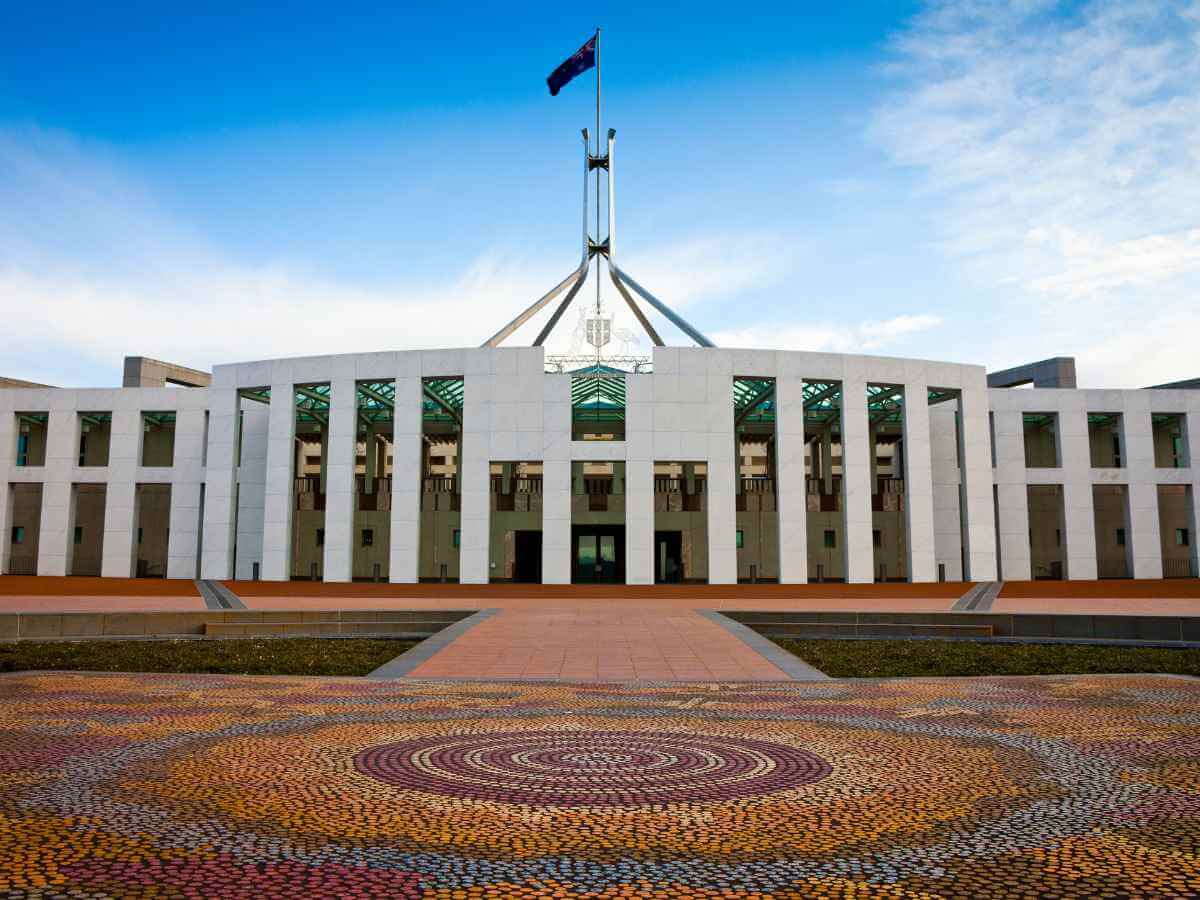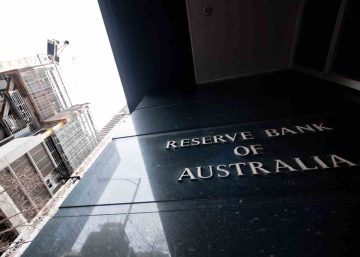2023-24 Federal Budget Summary
The highlight of the 2023-24 Federal Budget was the $4.2bn surplus; the first in 15 years.
The surplus was driven by a surge in the corporate and individual tax take. High commodity prices, inflation, and high employment have all pushed up corporate and individual tax receipts. But the gains can’t be relied on long term. The Budget is expected to deliver a deficit of $13.9 billion in 2023-24, and a $35.1bn deficit in 2024-25.
Social initiatives dominated the Budget:
- Energy bill relief for some households and small business
- Encouraging doctors to offer bulk billing by tripling the incentive for children under 16, pensioners and other Commonwealth card holders
- Increases to commonwealth rent assistance
- Increases to JobSeeker and other income support payments
- Expanding access to the single parenting payment
The Stage 3 tax cuts legislated to take effect on 1 July 2024 remain in place for now. Stage 3 radically simplifies the tax brackets by collapsing the 32.5% and 37% rates into a single 30% rate for those earning between $45,001 and $200,000.
If we can assist you to take advantage of any of the Budget measures, or to protect your position, please let us know.
As always, we’re here if you need us!
What wasn’t in the Budget?
There was no mention of the loss carry back rules for companies, suggesting that these rules will expire on 30 June 2023, along with the temporary full expensing rules. The loss carry back rules allow eligible companies to apply tax losses against taxable profits made in certain previous income years, rather than carrying them forward to future years.
There is no mention of the simplification of Division 7A. Division 7A captures situations where shareholders access company profits in the form of loans, payments or the forgiveness of debts. The 2016-17 Federal Budget proposed changes to reduce the compliance burden of Division 7A. These changes were initially meant to apply from 1 July 2018 but were deferred a number of times, before the Government announced that any changes would commence from the start of the income year following the date on which the changes receive Royal Assent. Aside from a Treasury discussion paper released back in October 2018, this issue remains in limbo.
The Budget also doesn’t refer to either the Skills and Training Boost or the Technology Investment Boost. These measures, announced by the previous Government, would provide a bonus deduction equal to 20% of qualifying expenditure if the legislation containing these measures is passed in its current form (Treasury Laws Amendment (2022 Measures No. 4) Bill 2022). The Technology Investment Boost is aimed at expenditure incurred between 7:30pm (ACT) on 29 March 2022 and 30 June 2023. The Skills and Training Boost is aimed at expenditure incurred between 7:30pm (ACT) on 29 March 2022 and 30 June 2024.
Snapshot of the economy
In surplus …for now
The surplus was driven by a surge in the corporate and individual tax take. High commodity prices, inflation, and high employment have all pushed up corporate and individual tax receipts. But the gains can’t be relied on long term. The Budget is expected to deliver a deficit of $13.9 billion in 2023-24, and a $35.1bn deficit in 2024-25.
Inflation to drop to 3.25%
While remaining persistently high for longer than anticipated, inflation is expected to fall from 6% to 3.25% in 2023-24.
The $3bn energy relief partnership with the states and territories and the temporary price cap on gas and black coal, are estimated to lower inflation by 0.75% in 2023-24.
Debt still an issue
Gross debt to GDP is expected to peak lower and earlier at 36.5% of GDP in 2025-26. While $154bn less than the March 2022 expectations, it is an eye watering $1.015 trillion. Net debt rises steadily to 24.1% of GDP to $702.9bn in 2026-27. And, this is assuming the Government can deliver on its anticipated savings reigning in the National Disability Insurance Scheme from a growth rate of 14% to 8%.
Growth slow down
Growth is expected to slow. Real GDP growth is expected to slow to 1.5% in 2023-24, before rising to 2.25% in 2024-25.
Unemployment remains low
The unemployment rate is projected to remain low by historical standards, rising modestly to 4.25% in 2023–24 and 4.5% per cent in 2024-25.
Identified savings
Notable Budget savings include:
- Tax on super balances above $3m
- Compliance programs matched to the ‘payday’ super guarantee changes
- Reforms to how liquid natural gas projects are taxed
- Implementing a global minimum tax and a domestic minimum tax
All up, the Government expects $13.7bn in improvements related to tax receipt measures.
Individuals and families
Energy price plan relief
From July 2023
$1.5bn has been provided over 5 years to provide targeted energy bill relief and progressing gas market reform.
The Energy Bill Relief Fund will provide targeted energy bill relief to eligible households and small business customers, which includes pensioners, Commonwealth Seniors Health Card holders, Family Tax Benefit A and B recipients and small business customers of electricity retailers.
In partnership with the states and territories, the plan is expected to deliver up to $500 in electricity bill relief for eligible households and up to $650 for eligible small businesses.
Funding has also been provided to the ACCC to enforce the temporary cap of $12 per gigajoule on the price of gas and to develop and implement a mandatory gas code of conduct. And, funding for Australian Energy Regulator to monitor coal and gas markets across the National Electricity Market.
The Government expects that retail electricity price increases in 2023-24 will be around 25% smaller and retail gas price increases around 16% smaller as a result of their interventions.
Household energy upgrade fund
A $1.3bn Household Energy Upgrades Fund will be established to support home upgrades that improve energy performance. No, the Government is not giving out cash for upgrades but providing $1bn to the Clean Energy Finance Corporation to provide low-cost finance and mortgages in partnership with private financial institutions for home upgrades that save energy.
$300m is committed to upgrading social housing in collaboration with states and territories. And, over $36m to upgrade the energy ratings systems.
Incentive to provide Medicare bulk billing to concession card holders and children
From 2022-23
As previously announced, the bulk billing incentive benefits for consultations for Commonwealth concession card holders and patients aged under 16 years of age will be tripled from 2022-23.
Less people to pay Medicare Levy
From 1 July 2022
The Medicare levy low-income thresholds for singles, families and seniors and pensioners will increase from 1 July 2022.
| Threshold | From | To |
| Singles | $23,365 | $24,276 |
| Family | $39,402 | $40,939 |
| Single seniors & pensioners | $36,925 | $38,365 |
| Family seniors & pensioners | $51,401 | $53,406 |
For each dependent child or student, the family income thresholds will increase by a further $3,760 instead of the previous amount of $3,619.
Exempting lump sum payments in arrears from Medicare Levy
The Government will introduce a technical amendment to ensure that low income earners who receive eligible lump sum payments are not subject to a higher amount of the Medicare Levy. For example, if an individual receives a lump sum compensation payment for underpaid wages.
To qualify, taxpayers must be eligible for a reduction in the Medicare levy in the 2 most recent years to which the lump sum accrues. Taxpayers must also satisfy the eligibility requirements of the existing lump sum payment in arrears tax offset, including that a lump sum accounts for at least 10% of the taxpayer’s income in the year of receipt.
Increasing JobSeeker
The Government will increase support for people receiving working age payments including JobSeeker.
The base rate of working age and student payments will increase by $40 per fortnight from 20 September 2023. The increase applies to the JobSeeker Payment, Youth Allowance, Parenting Payment (Partnered), Austudy, ABSTUDY, Disability Support Pension (Youth), and Special Benefit.
In addition, eligibility for the existing higher single JobSeeker Payment rate for recipients aged 60 years and over will be extended to recipients aged 55 years and over who are on the payment for 9 or more continuous months.
Single parent payment increase
From 20 September 2023
As previously announced, the age cut-off for the Parenting Payment (Single) will increase from 8 to 14.
From 20 September 2023, (subject to the passage of legislation), single parents will no longer have to transfer to JobSeeker when their youngest child turns eight. Instead, they will continue to receive the higher support, with a current base rate of $922.10 per fortnight until their youngest child turns 14.
As a result, eligible single parents currently on JobSeeker will receive an increase to payments of $176.90 per fortnight.
Single parents moving to Parenting Payment (Single) will also benefit from more generous earning arrangements compared to JobSeeker. Eligible single parents with one child will be able to earn an extra $569.10 per fortnight, plus an extra $24.60 per additional child, before their payment stops.
Increased rent assistance
The maximum rates of the Commonwealth Rent Assistance (CRA) allowances will increase by 15% from 2022-23.
Scheme enabling pensioners to earn more extended
The measure enabling age pensioners and veterans to earn more money before their pension is reduced has been extended for another 6 months, until 31 December 2023.
Under this measure, pensioners can earn up to $11,800 before their pension is reduced.
In-home aged care increase
An additional 9,500 Home Care Packages will be available in 2023-24. The $338.7m package also includes a trial to test products and services for a new assistive technologies loan program, commencing in July 2024 within 2 states and territories.
Access to home guarantee scheme expanded to friends and siblings
As previously announced, from 1 July 2023, access to the Government’s Home Guarantee Scheme will be expanded to joint applications from “friends, siblings, and other family members” and to those who have not owned a home for at least 10 years.
Superannuation and investors
Clarifying the non-arms length income rules for super funds
The non-arms length income (NALI) rules prevent superannuation trustees artificially increasing the balance of the fund, and accessing preferential tax treatment on the higher amount, by failing to recognise expenses incurred by the fund provided by a related party at a reduced rate. For example, your brother is a qualified accountant and does all of your SMSF’s accounting work for free (that he would normally charge $5k for).
Currently, where expenses incurred by the fund are not at arm’s length and below market rates, any income derived could be deemed to be non-arm’s length income and taxed at the top marginal tax rate. Expenses are divided into two categories, general and specific. General expenses relate to all of the income of the fund, for example accounting and audit fees. Specific expenses relate to a specific asset such as maintenance expenses on a property owned by an SMSF.
A Treasury consultation paper released in January 2023 recommended amendments to the way NALI is dealt with. The consultation recommended capping the amount of fund income taxable as NALI to 5 times the amount of the breach. The Budget confirms this cap to twice the level of a general expense.
In addition, fund income taxable as NALI will exclude contributions.
Expenditure that occurred prior to the 2018-19 income year will be exempt.
And, as per the consultation, large APRA regulated funds will be exempted from the NALI provisions for both general and specific expenses of the fund.
30% tax on super earnings above $3m
From 1 July 2025
An additional tax of 15% on earnings will apply to individuals with a total superannuation balance over $3 million at the end of a financial year from 1 July 2025. The definition of total superannuation balance (TSB) for the new tax uses the current definition and includes amounts in retirement phase pensions.
The calculation for the tax aims to capture growth in TSB over the financial year allowing for contributions (including insurance proceeds) and withdrawals. This method captures both realised and unrealised gains, enabling negative earnings to be carried forward and offset against future years.
Interests in defined benefit schemes will be appropriately valued and will have earnings taxed under this measure in a similar way to other interests.
Individuals will have the choice of paying the tax personally or from their superannuation fund and those with multiple accounts can nominate which fund will pay the tax.
This measure is estimated to increase tax receipts by $950m and increase payments by
$47.6m over the 5 years from 2022-23.
Business and employers
$20,000 small business instant asset write-off
From 1 July 2023 to 30 June 2024
Small businesses, with an aggregated turnover of less than $10 million, will be able to immediately deduct the full cost of eligible depreciating assets costing less than $20,000 that are first used or installed ready for use between 1 July 2023 and 30 June 2024.
“Immediately deductible” means a tax deduction for the asset can be claimed in the same income year that the asset was purchased and used (or installed ready for use).
If the business is registered for GST, the cost of the asset needs to be less than $20,000 after subtracting the GST credits that can be claimed for the asset. If the business is not registered for GST, it is $20,000 including GST.
The write-off applies per asset, so a small business can deduct the cost of multiple assets.
The rules only apply to assets that fall within the scope of the depreciation provisions. Expenditure on capital improvements to buildings that falls within the scope of the capital works rules is not expected to qualify.
Assets valued at $20,000 or more (which cannot be immediately deducted) can continue to be placed into the small business simplified depreciation pool and depreciated at 15% in the first income year and 30% each income year thereafter.
The provisions that prevent small businesses from re-entering the simplified depreciation regime for 5 years if they opt-out will continue to be suspended until 30 June 2024. This will be particularly relevant to small business entities that chose to leave the simplified depreciation system in order to opt-out of applying the temporary full expensing rules to one or more specific assets.
This announcement effectively confirms that the temporary full expensing rules, which have provided an immediate deduction for the full cost of assets acquired from 6 October 2020, will come to an end on 30 June 2023. Small business entities that are considering acquiring depreciating assets with a cost of $20,000 or more and business entities with aggregated turnover of $10 million or more should keep this cut-off date in mind as 30 June 2023 approaches.
$20,000 small business incentives for energy efficiency
From 1 July 2023 to 30 June 2024
As previously announced, the Small Business Energy Incentive provides an additional deduction of 20% of the cost of eligible depreciating assets that support electrification and more efficient use of energy.
Up to $100,000 of total expenditure will be eligible, with a maximum bonus deduction of $20,000.
The incentive is available to small and medium businesses with aggregated annual turnover of less than $50 million.
While the full detail of what qualifies for the incentive is not yet available, it is expected to apply to a range of depreciating assets and upgrades to existing assets such as electrifying heating and cooling systems, upgrading to more efficient fridges and induction cooktops, and installing batteries and heat pumps.
Some exclusions will apply including electric vehicles, renewable electricity generation assets, capital works, and assets that are not connected to the electricity grid and use fossil fuels.
Eligible assets or upgrades will need to be first used or installed ready for use between 1 July 2023 and 30 June 2024 to qualify for the bonus deduction.
Media release: Small Business Energy Incentive
Lowering tax instalments for small business
For 2023-24
Normally, GST and PAYG instalment amounts are adjusted using a GDP adjustment or uplift.
In 2022-23, the Government reduced this uplift factor to 2% instead of the 10% rate that would have applied. And now for 2023-24, the Government has set the uplift factor to 6% instead of the 12% rate that would have applied.
The 6% uplift rate will apply to small to medium enterprises eligible to use the relevant instalment methods for instalments for the 2023-24 income year and are due after the amending legislation comes into effect:
- Up to $10 million annual aggregated turnover for GST instalments, and
- $50 million annual aggregated turnover for PAYG instalments.
‘Payday’ super – Increasing payment frequency of employee super
From 1 July 2026
As previously announced, from 1 July 2026, employers will be required to pay their employees’ super guarantee entitlements on the same day that they pay salary and wages.
Currently, SG is paid quarterly.
The Government will undertake a consultation process with the aim of providing details of the final design of the measure in the 2024-25 Federal Budget.
Media Release: Introducing payday super
Hybrid cars excluded from FBT exemption for electric cars
From 1 April 2025
As previously announced, plug-in hybrid electric cars will be excluded from the fringe benefits tax (FBT) exemption for eligible electric cars from 1 April 2025.
Arrangements entered into between 1 July 2022 and 31 March 2025 can remain eligible for the FBT exemption as long as the exemption applied to the car before 1 April 2025 and the employer has a financially binding commitment to continue providing private use of the car on and after this date.
Franked distributions funded by capital raisings start date
From 15 September 2022
In 2016-17, the Government announced that it would seek to prevent shareholders from taking advantage of franking credits attached to dividends that are funded by capital raisings. The Budget confirms the Government’s intention to pursue this measure with a revised start date of 15 September 2022.
Under the measure, a distribution (dividend) paid by an entity will be treated as being funded by capital raising if:
- The distribution is not consistent with an established practice of the entity of making distributions of that kind on a regular basis;
- There is an issue of equity interests in the entity; and
- It is reasonable to conclude, having regard to all relevant circumstances, that either:
- The principal effect of the issue of any of the equity interests was to directly or indirectly fund all or part of the distribution; or
- An entity that issued or facilitated the issue of the interests did so for a purpose of funding all or part of the distribution.
The proposed changes seek to prevent the use of artificial arrangements where capital is raised to fund the payment of franked dividends to shareholders and therefore enable the distribution of franking credits. The Government is concerned that these arrangements can involve a manipulation of the system to allow existing shareholders to obtain the benefit of both the franking credits and the profits that generated those credits being retained in the company.
The effect of the proposed amendments is that direct or indirect recipients of affected dividends are not entitled to a tax offset, and the amount of the franking credit is not included in the assessable income of the recipient. The dividends are also not exempt from non-resident withholding tax.
The application date of the original measure was to be 19 December 2016. It has now shifted to 15 September 2022.
This measure is contained in Treasury Laws Amendment (2023 Measures No. 1) Bill 2023, which was introduced to Parliament on 16 February 2023.
Tax breaks for build-to-rent developments
As previously announced, the Government is actively sweetening the deal for build-to-rent developments.
For eligible new build-to-rent projects where construction commences after 7:30pm AEST on 9 May 2023, the Government will:
- Increase the rate for the capital works tax deduction (depreciation) from 2.5% to 4% p.a.
- Reduce the final withholding tax rate on eligible fund payments from managed investment trust (MIT) investments from 30% to 15%.
The measure applies to build-to-rent projects where 50 or more apartments are made available to rent to the general public. The dwellings must be retained under single ownership for at least 10 years before being able to be sold and landlords must offer a lease term of at least 3 years for each dwelling.
The reduced MIT withholding tax rate for residential build-to-rent will apply from 1 July 2024. The Government will work through a consultation process to determine implementation details, including any minimum proportion of dwellings being offered as affordable tenancies and the length of time dwellings must be retained under single ownership.
Media Release: Billions to boost social and affordable rental homes
Small business ATO compliance
Among the programs to reduce the compliance burden on small business is a series of initiatives to cut paperwork. These include:
- From 1 July 2024, small businesses will be permitted to authorise their tax agent to lodge multiple Single Touch Payroll forms on their behalf.
- From 1 July 2024, the Australian Taxation Office (ATO) will reduce the use of cheques for income tax refunds.
- From 1 July 2025, small businesses will be permitted up to 4 years to amend their income tax returns (generally 2 years).
Small business lodgment penalty amnesty
Small businesses with an aggregated turnover of less than $10m, will be able to access a lodgment penalty amnesty program. The amnesty will remit failure-to-lodge penalties for outstanding tax statements lodged in the period from 1 June 2023 to 31 December 2023 that were originally due during the period from 1 December 2019 to 29 February 2022.
Cost of tobacco to increase
From 1 September 2023
The tobacco excise and excise-equivalent customs duty will increase by 5% per year for 3 years from 1 September 2023 in addition to ordinary indexing.
In addition, the duty on products subject to the per kilogram excise and excise-equivalent customs duty (i.e., roll-your-own tobacco), will increase. The ‘equivalisation weight’ will be progressively lowered from 0.7 to 0.6 grams on 1 September each year from 2023, with the new weight coming fully into effect from 1 September 2026.
The measure is expected to increase receipts by $3.3bn and increase GST payments to the states and territories by $290m over the 5 years from 2022-23.
15% multi-national global and domestic minimum tax
The Government will implement key aspects of the OECD’s Two Pillar Solution introducing:
- A 15% global minimum tax for large multinational enterprises with the Income Inclusion Rule applying to income years starting on or after 1 January 2024 and the Undertaxed Profits Rule applying to income years starting on or after 1 January 2025.
- A 15% domestic minimum tax applying to income years starting on or after 1 January 2024.
The tax is based on the OECD Global Anti-Base Erosion Model Rules, which are designed to ensure large multinationals pay an effective minimum level of tax on the income arising in each jurisdiction where they operate.
The global minimum tax rules would allow Australia to apply a top up tax on a resident multinational parent or subsidiary company where the group’s income is taxed below 15%.
The global minimum tax and domestic minimum tax will apply to large multinationals with annual global revenue of EUR750 million (approximately $1.2 billion) or more.
Heavy vehicle user charge increase
From 2023-2024
The Heavy Vehicle Road User Charge rate from 27.2 cents per litre of diesel by 6% per year over 3 years from 2023-24 to 32.4 cents per litre in 2025-26.
Tax law changes for general insurers
From 1 January 2023
The introduction of the new accounting standard, AASB17 Insurance Contracts, by the Australian Accounting Standards Board, has meant that the tax law is no longer aligned with accounting standards. A legislative amendment will be made to enable general insurers to continue to use audited financial reporting information, which is calculated according to the new standard, as the basis for their tax returns.
Clean building MIT withholding tax concession extended
From 1 July 2025
The clean building managed investment trust (MIT) withholding tax concession will be extended to eligible data centres and warehouses that meet the relevant energy efficiency standard, where construction commences after 7:30pm AEST on 9 May 2023.
This measure will also raise the minimum energy efficiency requirements for existing and new clean buildings to a 6-star rating from the Green Building Council Australia or a 6-star rating under the National Australian Built Environment Rating System. The Government will consult on transitional arrangements for existing buildings.
Tax treatment of exploration and mining, quarrying and prospecting rights
From Expenditure incurred from 21 August 2013
As previously announced, the Government will amend the Petroleum Resource Rent Tax (PRRT) to clarify that ‘exploration for petroleum’ is limited to the ‘discovery and identification of the existence, extent and nature of the petroleum resource’ and does not extend to ‘activities and feasibility studies directed at evaluating whether the resource is commercially recoverable’.
From 7.30pm AEST, 9 May 2023
The tax treatment of depreciation deductions for mining, quarrying and prospecting rights will also be clarified to ensure that deductions will only commence when they are used (not merely held).
Bringing forward tax on natural gas
As previously announced, the Government will amend the Petroleum Resource Rent Tax (PRRT) to limit deductions and introduce a series of integrity measures for the offshore LNG industry. Consultation on the changes will occur later in 2023.
This measure is estimated to increase receipts by $2.4bn over the 5 years from 2022-23. The ATO will also be provided with $4.4 million to administer and ensure compliance.
Critical technology industry support
From 2022-23
$116m over 5 years will support the development of critical technologies. This includes support for businesses to integrate quantum and artificial intelligence (AI) technologies into their operations through:
- A Critical Technologies Challenge Program supporting projects that use critical technologies to solve significant national challenges, and will commence with a focus on projects that use quantum computing
- Extending the National AI Centre and its role in supporting responsible AI usage
- Establishing an Australian Centre for Quantum Growth to support ecosystem growth and commercialisation in Australia’s quantum industry
- Supporting SME’s adoption of AI technologies to improve business processes and increase trade competitiveness.
In addition, a Powering Australia Industry Growth Centre will develop advanced technology and skills as part of the Government’s Australian Made Battery Plan.
Support for child care workforce
From 2022-23
A series of measures will support the Early Childhood Education and Care (ECEC) sector including:
- $34.4m over 5 years to subsidise ECEC services to backfill up to 75,000 early childhood educators, and training for teachers and directors.
- $33.1m over 5 years for financial assistance for up to 6,000 educators to undertake a paid practicum in initial teacher education courses at a bachelor or post-graduate level.
- $4.8m for up to 2,000 ECEC workers to undertake a practicum exchange at a different service.
15% pay increase for Aged Care Workers
From 2022-23
$515m over 5 years will be provided to fund the outcome of the Fair Work Commission’s decision on the Aged Care Work Value Case – increasing award wages by 15% from 30 June 2023 for many aged care workers including registered nurses, enrolled nurses, assistants in nursing, personal care workers, home care workers, recreational activity officers, and some head chefs and cooks.
The increase will be partially offset by a temporary reduction in the residential aged care provision ratio from 78 places to 60.1 places per 1,000 people aged over 70 years.
Film industry location offset
To attract investment from large-budget screen productions and provide domestic employment and training opportunities, the Location Offset rebate rate will increase to 30%, whilst increasing the minimum Qualifying Australian Production Expenditure thresholds to $20m for feature films and $1.5m per hour for television series.
Other announcements
Support for SMEs and start-ups
An Industry Growth Program will support SMEs and start-ups to commercialise their ideas and grow their operations (businesses operating in the National Reconstruction Fund are a priority). The program has $392.4 million over 4 years.
An additional $39.6m over 4 years will support the Single Business Service to help SMEs engage with Government.
Media Release: Investing in industry growth
Cybersecurity funding
A small business wardens program through the Council of Small Business Organisations Australia (COSBOA) will support small businesses to build in-house capability to protect against cyber threats. $23.4 million has been provided over 3 years from 2023-24.
Disruptive defence technology funding
$3.4bn over 10 years has been provided to the Department of Defence to establish the
‘Advanced Strategic Capabilities Accelerator.’ Working with Australian industry, the accelerator seeks to “to lift capacity to translate disruptive new technologies into Defence capability rapidly.”
Direct pathway for kiwis to become Australian citizens
The Government will provide a direct pathway to Australian citizenship for New Zealand citizens in Australia from 1 July 2023, by allowing those who hold a non-protected Special Category visa (subclass 444), and meet general residence and other eligibility requirements, to apply directly for citizenship without becoming permanent residents first.
Reintroduction of work hour cap on international student visa holders
From 1 July 2023
During the pandemic, the cap on the number of hours an international student visa holder could work was removed.
From 1 July 2023 a work cap of 48 hours per fortnight will be reinstated. International students working in the aged care sector will be exempt from the cap until 21 December 2023.
International student post-study work rights extended
From 1 July 2023
In a move designed to strengthen the pipeline of skilled labour, from 1 July 2023, the Government will grant an extra two years of post-study work rights to international higher education graduates of Australian institutions with eligible qualifications.
Increase in wage expectations for temporary skilled workers
From 1 July 2023
Employers who wish to nominate workers for subclass 482, 186 and 187 visas must meet certain salary and employment condition requirements. This includes ensuring that the overseas worker is paid no less than an Australia worker doing the same job, and the visa programs does not undercut the Australian labour market. If a worker will be paid less than $250,000, the employer needs to prove that the overseas worker will be paid at least the Temporary Skilled Migration Income Threshold (TSMIT).
From 1 July 2023, TSMIT will increase from the current rate of $53,900 to $70,000.
Visa application charges increase
From 1 July 2023
From 1 July 2023, Visa application charges will increase by:
- 6% for visa applications
- 15% for select visitor and temporary isa subclasses
- 40% for business innovation and investment visas
The Pacific Engagement Visa and Pacific Australia Labour Mobility schemes are exempt from the increase.
$1bn to boost biosecurity
The Government has committed $1bn over 4 years to strengthen Australia’s biosecurity system. The spending is focussed on biosecurity policy and implementation including preparedness, digital systems in cargo pathways, and the reduction of biosecurity risks in Northern Australia.
The initiative is partially offset by increasing costs for the clearance of low value imported cargo and a biosecurity protection levy on Australian producers of agricultural, forestry and fishery products from 1 July 2024.
Further help:
If you have any questions about how the Federal Budget will affect you or your business, we are happy to work through it with you.
To organise a meeting, contact Marsh & Partners on 07 3023 4800 or at mail@marshpartners.com.au.







